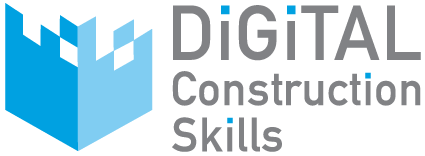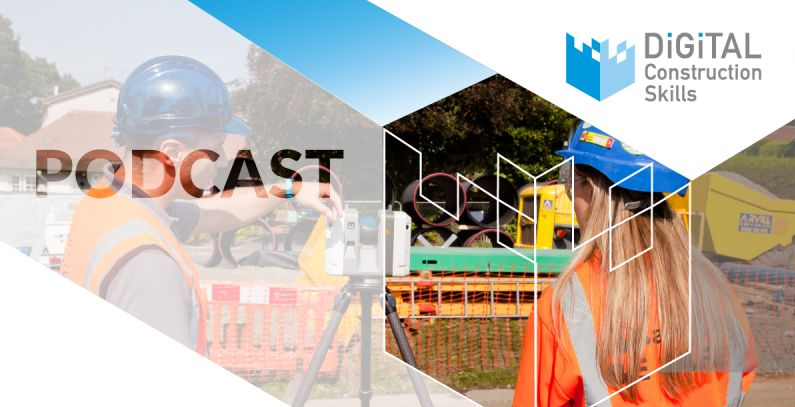Eight ways to get the most out of digital construction tools
Digital solutions for construction companies can have immense power and impact when implemented thoughtfully and strategically. When they are rushed in with little thought, however, they can potentially be costly and damaging let alone ineffective.
When you’re thinking about implementing a new digital product or service, there are many factors to consider. This blog gives an overview of some of them; we’ll go into each of these in more detail in future posts.
1. Consider the supporting skills needed
If you’re thinking of introducing project management software, consider what skills and attributes users will need other than just being confident with the technology:
- Do they need to understand how the documents they enter will be used by others?
- Have they been used to working in an adversarial environment where it was necessary to keep certain information close to their chests but are now in a situation where full transparency is critical to success?
- What about site engineers working with robotic total stations, GNSS, scanners and immersive photography? Do they understand how to transfer co-ordinated systems and geolocate the data? Digital technology aside, do they have the basic maths and spatial reasoning skills to detect any errors?
2. Get the right training
One of the most common reasons for unsuccessful implementation of a digital solution is failing to provide users with the necessary training to support it.
The apparent simplicity and user-friendliness of equipment such as machine control can be a red herring. If the engineers don’t have the relevant CAD skills or the experience to establish site control correctly, or if the machine drivers perceive the display unit as a distraction which simply serves to undermine their years of experience, then it’s likely to be a wasted investment or, at a minimum, not used to its full potential.

In the case of safety equipment such as cable detection kit, the saying ‘A little knowledge is a dangerous thing’ couldn’t be truer. A three-hour course delivered to twelve people by someone who has recently attended a 1-day train-the-trainer course and has never worked on a construction site may tick the requisite boxes legally but gives a false sense of capability and confidence which could potentially lead to serious injury or death.
3. Bring in the support/expertise
If you don’t have the right skills in-house for the implementation, it can be more cost effective to invest in expert support. This could reduce the learning curve by weeks or months and save you time, money, energy and wasted work.
- Find someone who comes recommended.
- Make sure they understand your needs and goals.
- Find someone whose aim is to help you set up systems and procedures so you can be self-sufficient rather than be dependent on them.
- Ask if they can train one or more of your own employees.
- Can they help you write a job description and interview for the right person?
4. Engage with your workforce
There at least a dozen blog posts we could write on this subject – and I’m sure we will in due course!
If you are introducing new technologies, the likelihood is you are bringing in new methods of working. In some cases, you may be expecting people to change the way they have worked for their whole career.
It makes sense to build rapport with your workforce before launching into sudden and drastic change. Any small problems with morale can be amplified if the employer forces the introduction of a new technology without getting the end users on board.
At best, you could find that the new regime is ignored or rejected. At worst, you could anger employees if they perceive that you are trying to save money at their expense, make their jobs redundant, or simply haven’t listened to their concerns about how they feel the new methods will impact on health and safety, efficiency or the way they prefer to do their jobs.
5. Crunch the numbers
It’s surprising how many companies go head-long into a significant investment in a particular digital technology without calculating the financial costs and benefits.
Before you make any decisions, gather information about the upfront costs, the running costs and any hidden costs and compare them to the potential cost savings it will bring in terms of time, fuel and material.
Consider how it could enable you to increase productivity or take on more employees, or how it could allow you to price more competitively or tender for bigger projects. Consider what the sunk costs will be if it doesn’t work out or if you’ll be practically or legally tied-in.
6. Look at the bigger picture
Before you jump in, think strategically. Don’t just look at one solution in isolation.
- How does the new technology interface with other systems?
- Instead of getting lots of different systems, is it worth getting one system that does everything?
- What order do you need to go in?
- How can one thing be used as an enabling tool or stepping-stone to something more ambitious?
- Where do you want to be in five years?
- How does it help you achieve your short term and long-term business goals?
- How could digital solutions open up new opportunities and in fact shape or alter the direction of your business plan?
7. Connect with others who have been through the process
Where possible, find some examples of where the tool has been used in a similar context to yours. Suppliers should be able to give you examples and introduce you to happy customers. Ask people you know or ask on LinkedIn to see if anyone is willing to share their experience.
8. Try before you buy
For most equipment and software, there is a way you can check that it’s right for your company before you make a significant outlay. That might be in the form of time-limited free trials of software or ‘lite’ versions which can be upgraded if you need to use them on a wider scale. For most expensive equipment, you should be able to hire it before you decide to buy it. This can be a good way of testing the quality of customer service as well as whether it meets your needs.
To sum up…
These are just a few of the factors to consider, and there are more questions than answers here, but that’s because every company has a unique situation. We’d love you to share your own thoughts in the comments below. What useful tips do you have for others? What questions do you have that other readers may be able to help you with?
Free training and consultancy
Digital Construction Skills has been awarded CITB funding to provide free training and consultancy to construction companies.
- Find out if you’re eligible.
- Sign up for our weekly newsletter containing information about upcoming events, announcements about new partners joining the project and details of pilot projects underway
- Join our LinkedIn discussion group.
The post Eight ways to get the most out of digital construction tools appeared first on Digital Construction Skills.


